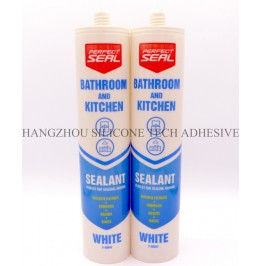Longevity Assessment of Bathroom Sealant Performance After Application
The durability of bathroom sealants post-installation depends on material quality, application techniques, and environmental conditions. Understanding these factors helps homeowners and contractors set realistic expectations for maintenance cycles and repair timelines.

The chemical composition of sealants directly impacts their lifespan. Polymer-based coatings, such as polyurethane or acrylic blends, typically outperform basic cementitious mixtures due to their elasticity and resistance to cracking. For instance, high-grade polyurethane sealants can maintain flexibility for 10–15 years under normal conditions, while inferior products may degrade within 5 years.
Thickness also plays a role. Industry standards recommend a minimum application of 1.5mm for vertical surfaces and 2.0mm for horizontal areas exposed to constant moisture. Thinner layers are prone to abrasion and UV damage, especially in shower zones with frequent cleaning.
Proper surface preparation is critical. Cracks or uneven substrates must be repaired with epoxy fillers before sealant application to prevent adhesion failures. Joints between tiles, bathtubs, and walls require special attention—using backer rods in gaps over 6mm wide ensures even pressure distribution and reduces stress on the sealant.
Multi-layer application enhances longevity. Applying a primer followed by two coats of sealant, with curing intervals of 24 hours between layers, creates a robust barrier. Skipping this step or rushing the process often leads to premature peeling.
High humidity and temperature fluctuations accelerate chemical breakdown. In bathrooms without exhaust fans, moisture levels can exceed 80%, causing sealants to soften and attract mold. Regular use of dehumidifiers or opening windows post-shower mitigates this risk.
Mechanical damage from cleaning tools or heavy objects also shortens lifespan. Abrasive scrubbers or dropping metal items on tiled surfaces can create micro-tears invisible to the naked eye. These weaken the sealant over time, leading to leaks.
Visual indicators of failure include discoloration, cracking, or bubbling. A musty odor near the base of walls suggests hidden moisture penetration. Homeowners should inspect sealants annually, focusing on high-risk areas like shower corners and floor-wall junctions.
Minor cracks (under 2mm wide) can be temporarily sealed with silicone caulk, but extensive damage requires full removal and replacement. Delaying repairs risks structural rot in drywall or flooring substrates, which are costly to fix.
National building codes, such as China’s General Code for Waterproofing of Buildings and Municipal Engineering (GB55030-2022), mandate a minimum 25-year design lifespan for indoor waterproofing systems. However, warranties from contractors often range from 5–10 years, reflecting practical limitations like material aging and user negligence.
To align with regulations, ensure compliance with thickness requirements and node treatments (e.g., reinforcing pipe penetrations with waterproof collars). Documenting the application process, including photos of primer layers and curing times, strengthens warranty claims.
By prioritizing material selection, meticulous application, and proactive maintenance, bathroom sealants can achieve their theoretical lifespan while safeguarding against costly water damage.
Copyright 2019 by Hangzhou Silicone Tech Adhesive Co., Ltd. All rights reserved.
Bathroom Sealant | Acrylic Sealant | Dow Corning 795 | Aquarium Sealant | Dow Corning 732 | Clear Silicone Sealant | Polysulfide Sealant | Glazing Sealant | Mirror Sealant | IG Sealant
Powered by Onepound